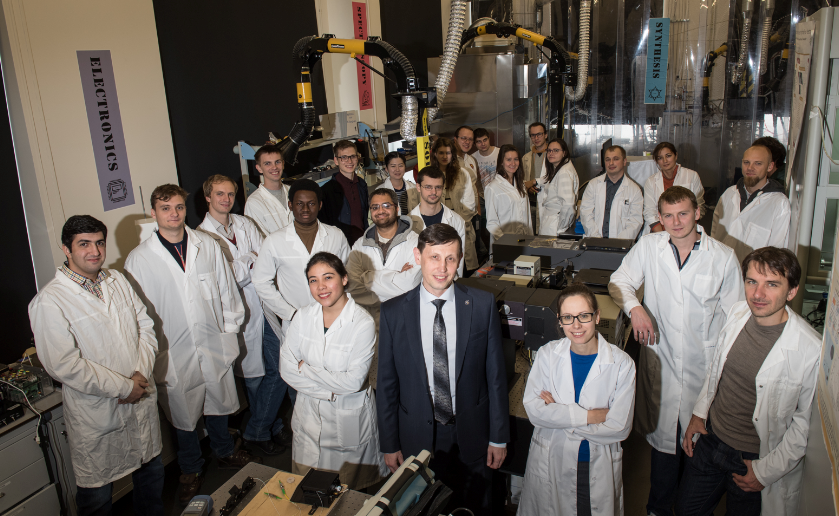Laboratory of Nanomaterials (LNM)
The Laboratory of NanoMaterials (LNM) is among the top technology laboratories in the world and offers a unique environment for strong interdisciplinary research and a proven track record of productive cooperation. The main research areas of the group are:
the synthesis of carbon nanomaterials (carbon nanotubes, graphene, metal oxide nanowires);
the applications of nanomaterials in transparent and flexible electronics, stretchable electronics and photonics.
The Laboratory of NanoMaterials conducts research related to the gas phase synthesis of carbon nanomaterials and their applications in optoelectronics and photonics. The international research team includes members from Russia, Finland, Ukraine, Kirgizstan, Nigeria, Venezuela, Mexico, Egypt and India.
Mission of the Laboratory
– Our mission is to carry out high impact scientific and applied research based on nanomaterials to gain international recognition as a laboratory for the research excellence. The scientific level of the group is maintained by international leading scientists, involved in the research, strengthened by successful collaboration with national and international researchers and by disseminating research results in high quality journals and by holding scientific conferences and teaching courses in the frame of scientific interests of the group. The main aim is to generate innovation and commercialization of scientific results produced in the laboratory.
The current staff includes:
1 Professor (Head of the laboratory, Dr. Sci. Albert G. Nasibulin);
6 PhD level senior scientists (Dr. Yury Gladush – optical measurements and modelling, Dr. Daria Kopylova – photodectors, Dr. Anastsia Goldt – chemistry of nanomaterials, Fedor Fedorov – gas sensors, Vladislav Kondrashov – electronic devices, Dmitry Krasnikov – synthesis of carbon nanomaterials);
14 PhD students (Alena Alekseeva – electronic nose based on SWCNTs, Anton Bubis – lithography, Artem Grebenko – synthesis of 2D materials, Maria Zhilyaeva – fibers, Aram Mkrtchyan – saturable absorber, Eldar Khabushev – PL from CNTs, Daniil Ilatovsky – Photophoresis, Javier Ramirez – Smart reactor, Mikhail Bulavsky – Electrochemistry of nanomaterials, Ilya Novikov – polymer composites, Aly Elakshar – hybrid solar cells; Polina Kalachikova – separation of carbon nanotubes; Valery Zaitsev – Electronic nose; Margarita Chetyrkina – Biocompatible SWCNT fibers);
10 Students (2nd year MS students: Alesya Osipova, Nicole Semenova, Alisa Davydova, Alisa Shaikhulova, Alexander Marunchenko, Ayvaz Davletkhanov, Sergey Raudik, Konstantin Zamansky, Pornsruang Wiwattanakul, Daniil Leontiev).
Importantly, the SWCNTs synthesized by the aerosol method developed in our group meet all the requirements for low-cost, flexible, transparent and stretchable electronics, which could be used in many high-tech applications like touch sensors and displays, flexible and transparent electrodes in photovoltaic devices, optoelectronic devices, OLEDs, supercapacitors, etc. Moreover, our AuCl3 and HAuCl4-doped SWCNT films exhibited state-of-the-art sheet resistances as low as 40 Ω/□at a transmission of T = 90%. This is superior to the performance of various ITO on flexible polymer substrates and, to our knowledge, is the lowest reported sheet resistance for SWCNT-based transparent electrodes. Additionally, these SWCNT films can be used to fabricate thin, conductive and mechanically strong fibers. Further, the Russian group has made contributions in the field solar cells with SWCNT films as heterojunction with C-Si and amorphous silicon where a novel approach of device fabrication under ambient conditions has been reported.
